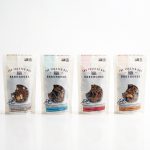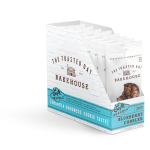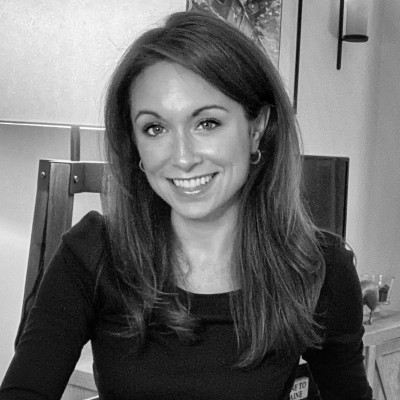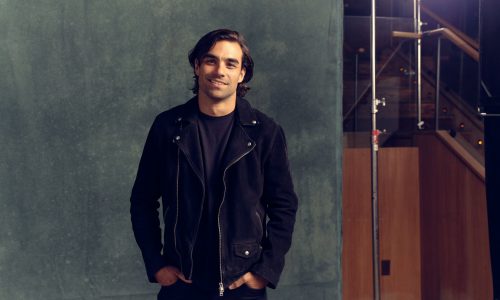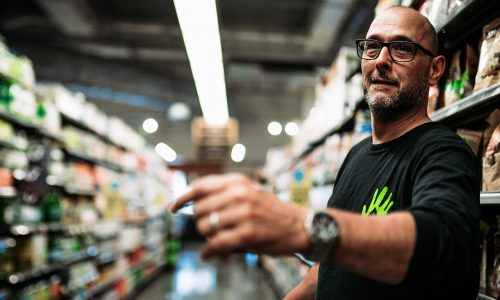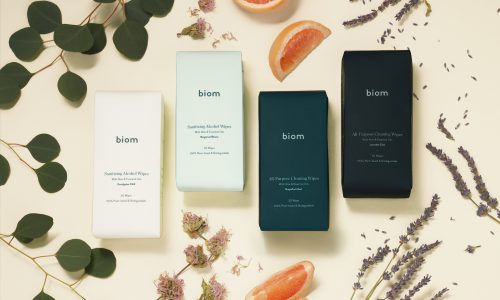 Real Talk is an ongoing, co-branded article series in partnership with AccelFoods that aims to highlight workplace and brand building topics that often go undiscussed. The goal of the series is to not only shed light on these topics but to ultimately open up the conversation and spark a meaningful dialogue about it with industry influencers and beyond.
Real Talk is an ongoing, co-branded article series in partnership with AccelFoods that aims to highlight workplace and brand building topics that often go undiscussed. The goal of the series is to not only shed light on these topics but to ultimately open up the conversation and spark a meaningful dialogue about it with industry influencers and beyond.
Erika Boll didn’t set out to launch a food brand. She spent the majority of her career working in corporate retail, and it wasn’t until her love for baking, coupled with her Celiac disease diagnosis, that spawned the beginnings of her granola brand, The Toasted Oat.
And while the initial granola product received rave reviews — from both her coworkers and a hungry Whole Foods grocery buyer — the thrill of bringing the product to market was short-lived. Boll quickly realized she lacked some of the basic fundamental building blocks of any successful business: money and industry connections.
We caught up with Boll to learn more about her story and the challenges she overcame to build The Toasted Oat into the brand it is today.
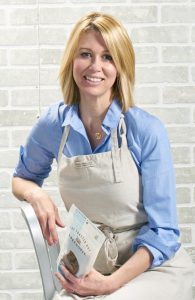 Q: You didn’t set out with the intention of starting a food business. Tell us a bit about your background and what inspired you to launch The Toasted Oat in 2013.
Q: You didn’t set out with the intention of starting a food business. Tell us a bit about your background and what inspired you to launch The Toasted Oat in 2013.
A: So true! I spent most of my early career-life in visual merchandising with L Brands (ie. Victoria’s Secret, The Limited, Bath & Body Works, etc.), primarily focused on the design and procurement of 3D display elements in stores. I guess I have always had the retail bug, but never in a million years imagined it would translate to launching a food business.
The turning point for me was in early 2007. I was still at L Brands when I was diagnosed with Celiac disease. Although I had exhibited symptoms for many years, the diagnosis completely caught me off guard. Very quickly, I had to figure out what was safe to eat. This led to a lot of kitchen experiments. I have always been an avid baker (a secret love, I call it my “therapy”), and was known around the office for bringing in some type of baked treat every Monday. So, I started pulling out all of our best family recipes, sampling different grain combinations to achieve the same taste experience. I benefitted from having a group of ready and willing taste testers to pick the winning recipe combinations. My grandmother Margaret’s granola recipe, which is the founding recipe for The Toasted Oat’s first product line, always received rave reviews (many compared it to the addictive quality of something I shouldn’t mention in print). During what I thought would be a short work hiatus in early 2013, I ventured into our local Whole Foods Market in Columbus, Ohio with Ziplock bags of my grandmother’s granola. I had called ahead and arranged a meeting with the grocery buyer, and his response changed my whole trajectory: “This is the best granola I have ever tried. How fast can we have it on the shelf?” I mean, who can walk away from that invitation?
Q: What sets The Toasted Oat apart from other all-natural, gluten-free granolas?
A: The Toasted Oat offers the only soft, butter-baked granola in the category. The taste and texture are comparable to a freshly baked oatmeal cookie — it’s different from traditional granola which is dry and crunchy. That key differentiator extends our usage occasion far beyond breakfast to the crust of cheesecakes, filling for a pork tenderloin, and ingredients in breads, muffins, or pancakes. And of course it can be eaten simply straight out of the bag — no spoon required! All of our products are, of course, Certified Gluten-free by GFCO. In 2018, we became Non-GMO Project Verified. We take great pride in selecting ingredients in the same way you would if you were baking in your own kitchen, and we are thrilled to share a product that delivers a truly indulgent experience that is also wholly natural.
Q: How did you initially approach funding for The Toasted Oat?
A: We were self-funded in the beginning with major bootstrapping from 2013-2016. My husband and I constantly pulled from our personal savings. I scoped out as many local pitch competitions as possible, and was fortunate to receive financial awards from two of them: COSE Pitch Competition in northeastern Ohio, and Excellence in Entrepreneurship, awarded by the Ohio Chamber of Commerce. Both came at critical inflection points of the business, first as we were building out our own production facility and the second as we started to expand regionally. We were managing cash day-by-day — there were no reserves.
Q: What were some of the challenges you initially encountered when trying to finance the business?
A: The largest hurdle, in the beginning, was not knowing what expense was coming around the corner. There were constant financial surprises. As we started gaining traction, there were greater production requirements, promotional requests, trade shows — in other words, there were a lot of expenses that went beyond just fulfilling new orders. We had a tough time finding local resources (being in Ohio) for CPG startups. Most of the venture capital and angel activity is geared toward tech. I realized in 2015 that we needed to start looking outside the state if we were going to survive. Our CFO and I started Google searching like crazy looking for venture funds in the natural food space, submitting inquiries through websites, and sending sample boxes to what we thought were viable options. Little did we know, the majority required far higher revenues to even start the discussion.
Q: If you could go back and do anything differently about the way you approached funding, what would you do?
A: I am not sure I would necessarily do anything differently because it has brought us to this amazing place where we have well rounded local and industry support in our business.
I do wish I had known more in the early days about what it would take to finance the business.
Being forced to count pennies is a blessing — I still balk at the cost of a trade show or free fill programs, and those decisions remain very strategic. I don’t think I would make decisions in the same way if someone had handed me a large check on day one. At each stage, we have found the right partners to get us over the next hurdle. Now, do I sometimes daydream about having a money tree in the backyard? YES! But I think there is something invaluable about putting it all on the line — it forces you to really commit both your resources and your faith into making it work.
Q: You credit a lot of your success to your ability to network. How did you start to build these industry connections?
A: It’s funny, before this venture I never would have told you I had networking strength. But when you love what you are doing, you just want everyone to know. It was pretty basic in the beginning, everywhere I went (I mean everywhere, including my doctor’s office), I asked people if they knew of resources for early-stage companies. I think there is a real value in sharing your story as you go through your daily life, it allows an opportunity to validate what you are doing, and opens the doors for people to help or become involved where they otherwise wouldn’t have known about it — and we did get investors in this organic way.
My connection to the CPG world came during the laborious process of looking for funding. A friend of mine connected me to an investment banker who wouldn’t give me the time of day until he passed me through his CPG colleague. As I began telling our story to this CPG veteran, he started getting really excited about what we were doing and offered to help us work through a lot of the issues we were facing as a new brand. That introduction, which was intended to be a gatekeeper, became the gift of a new friend that has since opened so many other doors to us along our journey. The investment banker never really came into the picture after that, but the referral is one of my key advisors today.
Q: Do you have any industry mentors who you credit to your success as a food entrepreneur?
A: Definitely! In early 2016 (back to the story above), I was introduced to Jeff Grogg and Lucinda Wright, both of whom spent time at Kellogg’s, a perfect fit for our brand. They have led amazing CPG careers both in industry and consulting, and have unbelievable insights into all aspects of building a brand from the ground up. Jeff has been critical as we have scaled the business and production, and Lucinda was a key contributor to our full rebrand in 2017. We could not have executed these two major changes without them, or at least not as successfully. Jeff and Lucinda continue to provide constant support for which I am so grateful. Their guidance is also what prepared us for our first meeting with AccelFoods in mid-2016. The team at AccelFoods has also played a key role in mentoring and supporting The Toasted Oat through every stage, and have been critical to my success as the leader of this company, and for our growth as a brand.
Q: What advice would you give to aspiring entrepreneurs who are looking to launch a food business of their own with limited financial backing?
A: I think the most valuable thing you can do in the beginning is to connect with other food entrepreneurs. We are all on essentially the same journey, and I have found the entrepreneur community is a very selfless and helpful group of people. This is a complicated business, and more often than not, you will be able to find someone who has dealt with that distributor, retailer, or investor that you are targeting and the mistakes or successes of someone else could open your eyes to something you hadn’t considered. Trade shows are a great place to do this, and I always love walking the showroom floor and making new friends — sometimes at the crazy shows, you only have time for your booth neighbors, but they become your sounding board if you can spend the time to nurture those relationships.
Interested in working at an innovative food brand like The Toasted Oat? Explore our specialized FoodForce division.
